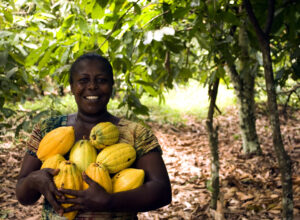
Although Americans may differ as to where and when the first Thanksgiving was celebrated (Plymouth, Massachusetts, 1620—or near Jamestown, Virginia at Berkeley, 1619,) whether that savory bread crumb mixture is cooked inside the turkey (stuffing,) or outside the bird (dressing,) and whether we conclude our feast with pumpkin pie or sweet potato pie, we are pretty secure in the notion that Thanksgiving is the quintessential American holiday.

But, giving thanks is not limited to the citizens of just one country in the world. THANKFULLY, being grateful for our good fortune is among the more noble of human traits. Among many of those who set aside a day (or several) to give thanks are:

Germany—As with many other cultures, Germany’s festival of Thanksgiving is held during harvest time. Erntedankfest (“harvest festival of thanks”) takes place on different dates throughout the country, but all occur in September or October. The traditions include woven baskets of grains, fruits, and flowers, called Erntekrone (“harvest crown”) carried in processions to local churches. Following a service of thanksgiving, there may be parades where an Erntekrone is presented to a Harvest Queen. Surplus food is distributed to the poor and, in the evening, the streets are aglow with Laternenumzüge (“lantern parades.”) Germans feast on fattened-up poultry: Masthühnchen (“broiler chickens”) or der Kapaun (“capon.”)

Japan—In Japan, an ancient rice harvest, called Niinamesai, has been transformed into Kinro Kansha no Hi (“Labor Thanksgiving Day”)—a November day set aside for expressing gratitude to those who labor for the benefit of all. Instead of feasting, school children prepare cards and gifts that are distributed to public servants such as firefighters, police officers, and hospital staff.

Canada—Canadian Thanksgiving falls in October with origins back to 1579 when Martin Frobisher set aside the day for him and his crew to give thanks for the safe completion of a dangerous sea voyage to Newfoundland. Like its southern neighbor, the day of gratitude includes heartfelt expressions of thanks, feasting on turkey dinners with families, and the consuming of hours of televised football games.

India—In parts of India, January marks the celebration of thanks for a plentiful rice harvest as well as the end of monsoon season. Pongal is marked by days filled with festive rice dishes, bonfires burning old useless items, and special caring attention paid to cattle and birds.

Korea—Held on the 15th day of the 8th month of the lunar calendar (around mid to late September,) Koreans gather with family to celebrate and express gratitude during the harvest festival known as Chuseok. It is a time when one’s ancestors are especially remembered and revered and when family tombs are visited and cleaned. An important dish is songpyeon—small cakes made using finely ground, new rice, and filled with sesame seeds, chestnuts, red beans, and other edible treats.

China—At the same time as the Korean festivities, China celebrates a time of thanksgiving and good will during its three-day fall harvest festival, Chung Chiu (“Moon Festival.”) Family and friends gather to share sweet moon-shaped pastries called mooncakes. The little cakes contain duck egg yolk (representing the full moon,) lotus seed paste, and sesame seeds. The baker’s insignia is often embossed on the top.

Ghana—The people of Ghana celebrate gratitude during Homowo (“hooting at hunger.”) It is a remembrance of a time when their ancestors survived a period of great drought and hunger. Each year, a time of quiet, symbolizing the ancient famine, is followed by loud celebrations to mark when the life-giving rains returned to Ghana. A special dish made from cornmeal—kpokpoi—is served with palm nut soup.

So, wherever you are in the world, there is often a time set aside to celebrate the giving of thanks. How ever you mark the day, I wish you abundant joy and a year-round attitude of gratitude.
Thanks for stopping by. Y’all come back, now (because I am grateful for YOU!)
Kate